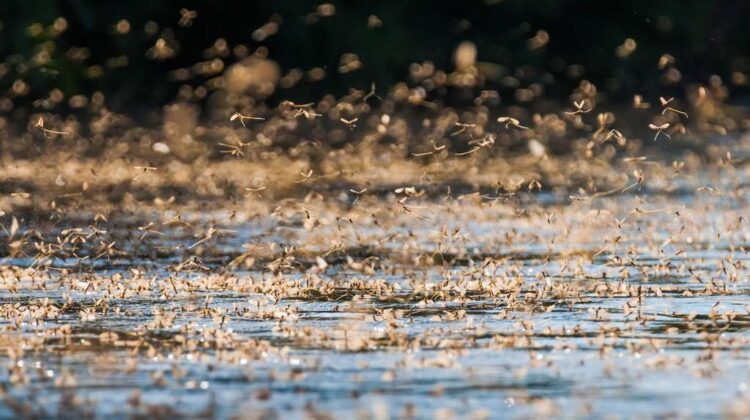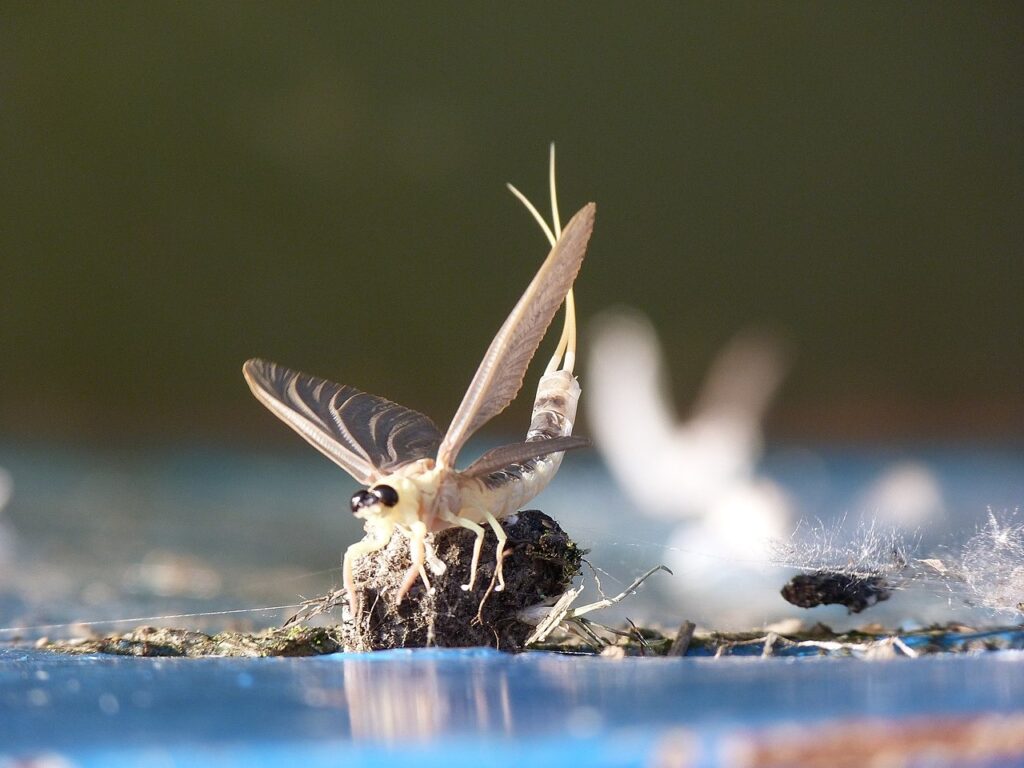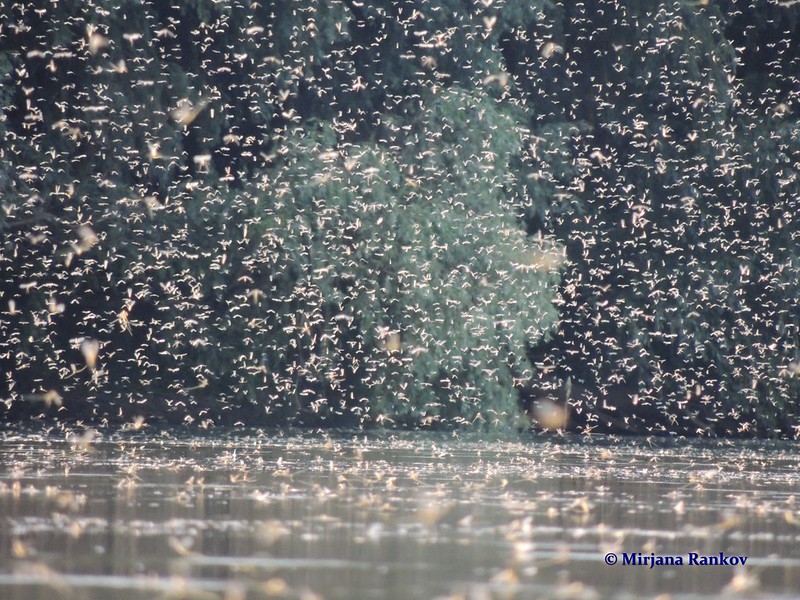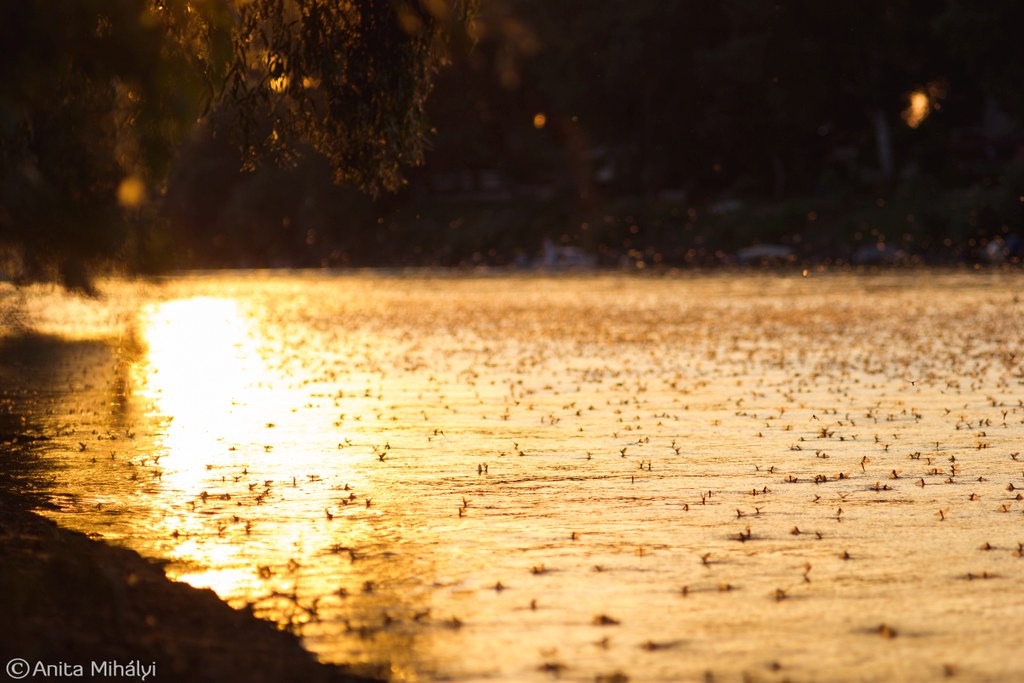
Every year, travelers go to the River Tisza to watch the ‘Tisza blooming,’ a magnificent mating of mayflies in which millions of larvae hatch and develop in a single week.

Mayfly mating is unique not just in Hungary, but also in the globe. Even Aristotle noted these fleeting insects, known for their exquisite mass mating dance, and dubbed them Ephemeron (living but for a day). The Hungarian counterpart, ’tiszavirág,’ likewise means “short life.”
The mayfly (Palingenia longicauda), often known as the long-tailed mayfly or the gigantic mayfly since it is Europe’s biggest mayfly species, measures 12 cm (4.7 in) from head to tail. Female Tisza mayflies typically lay 7-8000 eggs on the water’s surface, and their maturation takes three years. The conclusion of this phase initiates their stunning mating, known as ‘Tisza blooming,’ which occurs most peacefully in warm, windless conditions.

After flying ashore, males begin their short adult life (varying from a few hours to half a day). Females come a bit later, solely interested in finding a spouse and not in eating.
Millions of mayfly specimens fly over the Tisza River during the most stunning stage of the mayfly mass-mating, producing a lovely dance (see video below). The incredible show takes place in the late afternoon and evening, generally between 18 and 21 hours.

Apart from being visually stunning, the Tisza flowering has vital ecological implications since mayflies feed numerous kinds of fish, birds, and frogs.
The mayfly became extinct in Western Europe around the turn of the twentieth century, and its numbers have declined dramatically in Central Europe in recent decades. Aside from climate change, river restrictions and changes, plastic bank protection of riverbanks, and river pollution have all contributed significantly to the substantial decrease in the population of these insects. Today, the Tisza River in Hungary is the only site where they may be found in large quantities.

This year’s blossoming has just just begun! Watch this incredible video to find out what’s going on.
Truly an amazing sight!

Leave a Reply